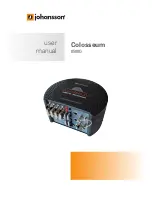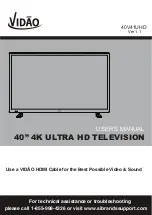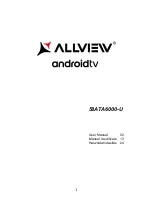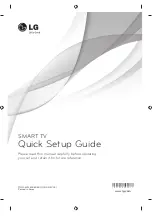
3DQDVRQLF
37
Chapter
3
EURO 4H Supplement
3.3.
Tube and Picture Measurement
Tube and Picture measurements are carried out by
gating relevant information back via transistors Q351,
Q361 and Q371 to the sense input, pin 17 of the DDP
IC1504. These Tube and Picture measurements
being discussed in detail in chapter 3 section 2.9. of
the DDP. However below is a brief overview of Tube
and Picture measurements.
3.3.1. Tube Measurement
The
Tube
measurements
(cut-off
control)
as
described in chapter 3 section 2.9. is basically a scan
regulating circuit, which electronically regulates for
dynamic tolerances and the effects of aging, of the
C.R.T. etc.
It also offers the following advantages:
:
Automatic black level and white level tracking.
:
Prevention of colour falsification during the
picture tube heating up time.
This eliminates the setting regulators which were
once common, and the need for compensation.
During field flyback the leakage current from the CRT
system is measured at ultra black before the cathode
currents for the three systems (RGB) are measured.
These measured values are then gated back via the
previously mentioned transistors Q351, Q361 and
Q371 to the DDP IC1504 pin 17.
In addition to the above control, to also stabilise the
cut-off control against voltage variations due to load,
IC381 is used. If the 12V supply line were to vary due
to load then the operating point of IC351, IC361,
IC371 which is set via pin 1 would also vary altering
the cut-off.
The 12V supply is monitored via the R terminal of
IC381, which is responsible for the conduction of the
internal zener diode between the K and A terminals.
If the voltage at the R terminal rises conduction of the
zener diode increases maintaining a constant supply
to pin 1 of the three output ICs. Likewise if the voltage
at the R terminal of IC381 reduces then the
conduction of the internal zener diode is reduced
accordingly.
3.3.2. Picture Measurement
During Picture Measurement, which is carried out
during active picture scan, measurement of the active
picture current is carried out, this data is then input via
the sense terminal pin 17 of the DDP IC1504, where
this information is used to provide software controlled
beam current regulation.
3.4. BEAM CURRENT LIMITATION
The measurement of the beam current as mentioned
in the previous section is fed via the Sense input of the
DDP IC1504 pin 17, the result of the measurement
being compared to the value stored in memory. The
result of which is used to reduce the drive of the
brightness A/D converters and if necessary the
contrast A/D converters.
However if the beam current fails to be reduced the
the beam current safety circuit is used to switch off the
T.V.
This is achieved by the flyback transformer which
works with virtual earthing, this basically means that
as the beam current increases the base of the flyback
transformer T551 becomes negative. If the beam
current reaches the maximum control range of the
FBT the zener diode D511 conducts, this causes pin
75 of the microprocessor IC1101 to go LOW resulting
in the TV being switched in to standby (refer to page
20 of the microprocessor stage).
3.5. ABL Stabilisation
This circuit which consists of Q552 and R564 (located
on the E-Board) is used to keep the beam current at
a constant level avoiding degradation in Focus and at
the same time reducing blooming effects normally
associated with increases in beam current.
This circuit is arranged so that as the beam current
increases transistor Q552 switches OFF, this means
that resistor R564 is no longer in parallel with R562 /
R563 thus reducing the above mentioned artifacts.
3.6.
Switch-off Spot Suppression
The switch-off after-glow flecks which would occur if
the CRT charge could not be reduced quickly enough
are suppressed by transistor Q3352.
At switch-on and during operation Q3352 has no
effect, since the base and emitter of Q3352 are at the
same potential and so is non-conducting.
At switch-off Q3352 is switched ON by a rapidly falling
supply line. Diode D3351 becomes reversed biased
due to the charge held in electrolytic capacitor C3351,
this causes Q3352 to become conductive and so
C3351 discharges via the emitter/collector junction of
Q3352. This discharging capacitor C3351 causes
diodes D3352 / D3353 / D3354 to conduct, forcing the
colour output amplifiers of IC351 / IC361 / IC371 into
saturation, discharging the CRT quickly preventing
after-glow.
Summary of Contents for EURO 4 Chassis
Page 24: ...3DQDVRQLF 24 ...
Page 26: ...3DQDVRQLF 26 TV STANDARDS ...
Page 93: ...3DQDVRQLF 10 ...
Page 97: ...3DQDVRQLF 14 Chapter 2 EURO 4 Supplement P Board DAF Circuit ...
Page 101: ...3DQDVRQLF 18 ...
Page 121: ...3DQDVRQLF 38 Chapter 3 EURO 4H Supplement Y Board Schematic ...
Page 124: ...3DQDVRQLF 41 ...
















































